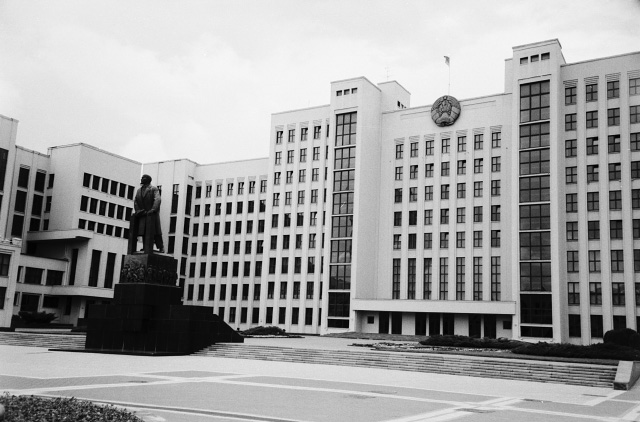Dante_Stella
Rex canum cattorumque
Ok - I just got finished scanning 5,300 black and white negatives on a Kodak F-235 plus, which effortlessly kicks out 3000x2000 scans at the rate of about 800 an hour (assuming, of course, you can get negative strips out of pages that fast). This is an amazing little machine that has a smaller footprint than a small flatbed. Too bad that most of the minilabs that used them knew nothing of the RAW mode.
On going through the results (directed toward my project of cataloguing negatives), I was not surprised to see that 400-speed black and white film shows grain at that resolution. The real surprise was that 100-speed film (TMX) did as well. I checked the grain on TMX, PX, TX, TMY, TMZ, XP1, XP2 Super, and every variety of Kodak chromogenic that exists (or ever existed). So it's not likely that it's grain aliasing.
Are we deluding ourselves that there is any more than 6Mp of image data in a typical 35mm frame?
My suspicion is yes; the conventional wisdom before scanners was that a typical 35mm frame was not much good above 8x10 (viewed close up). For reference, it takes about 240 dpi on the paper to make a final 8x10 dye sub or Frontier print comparable to one optically printed. This brings us back to a 3000x2000 scan. My suspicion is that lab scanners never got past this because their manufacturers (Kodak and Fuji) decided that there was nothing to be gained - at all - by resolving grains more precisely.
Next, given my experience in scanning b/w at 4000 dpi on my Sprintscan, I have noticed that grain aliasing is an issue that seems to get bigger with higher scan resolution and finer-grain film. And if there is only 2000 dpi of information in there, why are we quadrupling the required storage and processing power?
Thoughts?
On going through the results (directed toward my project of cataloguing negatives), I was not surprised to see that 400-speed black and white film shows grain at that resolution. The real surprise was that 100-speed film (TMX) did as well. I checked the grain on TMX, PX, TX, TMY, TMZ, XP1, XP2 Super, and every variety of Kodak chromogenic that exists (or ever existed). So it's not likely that it's grain aliasing.
Are we deluding ourselves that there is any more than 6Mp of image data in a typical 35mm frame?
My suspicion is yes; the conventional wisdom before scanners was that a typical 35mm frame was not much good above 8x10 (viewed close up). For reference, it takes about 240 dpi on the paper to make a final 8x10 dye sub or Frontier print comparable to one optically printed. This brings us back to a 3000x2000 scan. My suspicion is that lab scanners never got past this because their manufacturers (Kodak and Fuji) decided that there was nothing to be gained - at all - by resolving grains more precisely.
Next, given my experience in scanning b/w at 4000 dpi on my Sprintscan, I have noticed that grain aliasing is an issue that seems to get bigger with higher scan resolution and finer-grain film. And if there is only 2000 dpi of information in there, why are we quadrupling the required storage and processing power?
Thoughts?



